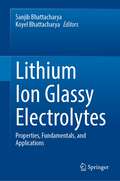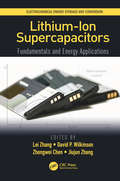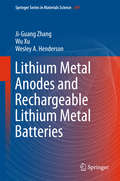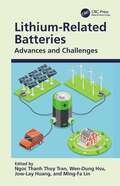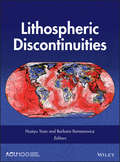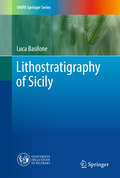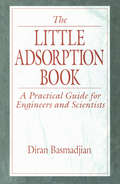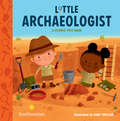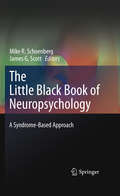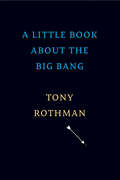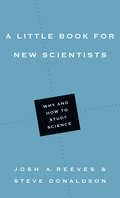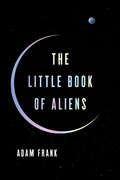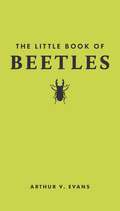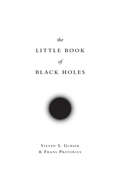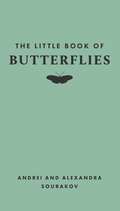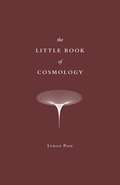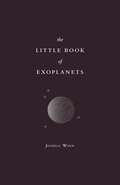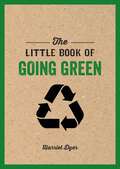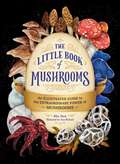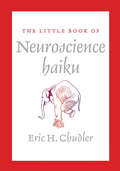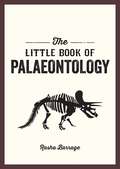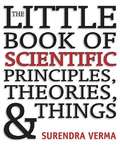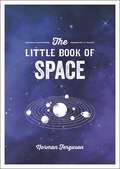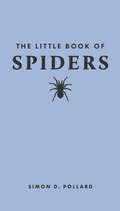- Table View
- List View
Lithium Ion Glassy Electrolytes: Properties, Fundamentals, and Applications
by Sanjib Bhattacharya Koyel BhattacharyaThis book presents recent developments and future scopes of glassy systems, such as their electrical and optical properties, use as electrodes, photonics devices, battery applications and others, which are of great interest for material scientists and professionals. Each chapter is designed to increase coherence, containing examples and question sets as exercises for in-depth understanding of the text. It provides a valuable resource for researchers, professionals and students in the area of material research especially on Li-doped glasses.
Lithium-Ion Supercapacitors: Fundamentals and Energy Applications (Electrochemical Energy Storage and Conversion)
by Lei Zhang David P. Wilkinson Zhongwei Chen Jiujun ZhangThe book provides a comprehensive understanding of the principles for operating lithium-ion supercapacitors (LISCs), their challenges, technological trends and perspectives. LISC technology has high potential to replace conventional rechargeable batteries such as lead-acid and nickel metal hydride batteries for automotive, portable electronics, and stationary applications. The book offers detailed analysis of LISCs at the material, component, and system levels to evaluate the different approaches to their integration. It also discusses economics, market, manufacture, and commercialization status of LISCs. It is an up-to-date study of an emerging field, written by experts, ideal for those in academia and industry who want a detailed explanation of the technology.
Lithium Metal Anodes and Rechargeable Lithium Metal Batteries
by Ji-Guang Zhang Wu Xu Wesley A. HendersonThis book provides comprehensive coverage of Lithium (Li) metal anodes for rechargeable batteries. Li is an ideal anode material for rechargeable batteries due to its extremely high theoretical specific capacity (3860 mAh g-1), low density (0. 59 g cm-3), and the lowest negative electrochemical potential (−3. 040 V vs. standard hydrogenelectrodes). Unfortunately, uncontrollable dendritic Li growth and limited Coulombic efficiency during Li deposition/stripping inherent in these batteries have prevented their practical applications over the past 40 years. With the emergence of post Liion batteries, safe and efficient operation of Li metal anodes has become an enabling technology which may determine the fate of several promising candidates for the next generation energy storage systems, including rechargeable Li-air batteries, Li-S batteries, and Li metal batteries which utilize intercalation compounds as cathodes. In this work, various factors that affect the morphology and Coulombic efficiency of Li anodes are analyzed. The authors also present the technologies utilized to characterize the morphology of Li deposition and the results obtained by modeling of Li dendrite growth. Finally, recent developments, especially the new approaches that enable safe and efficient operation of Li metal anodes at high current densities are reviewed. The urgent need and perspectives in this field are also discussed. The fundamental understanding and approaches presented in this work will be critical for the application of Li metal anodes. The general principles and approaches can also be used in other metal electrodes and general electrochemical deposition of metal films.
Lithium-Related Batteries: Advances and Challenges
by Ngoc Thanh Thuy TranThis book serves as a comprehensive treatment of the advanced microscopic properties of lithium- and sodium-based batteries. It focuses on the development of the quasiparticle framework and the successful syntheses of cathode/electrolyte/anode materials in these batteries. FEATURES Highlights lithium-ion and sodium-ion batteries as well as lithium sulfur-, aluminum-, and iron-related batteries Describes advanced battery materials and their fundamental properties Addresses challenges to improving battery performance Develops theoretical predictions and experimental observations under a unified quasiparticle framework Targets core issues such as stability and efficiencies Lithium-Related Batteries: Advances and Challenges will appeal to researchers and advanced students working in battery development, including those in the fields of materials, chemical, and energy engineering.
Lithospheric Discontinuities (Geophysical Monograph Series #239)
by Huaiyu Yuan Barbara RomanowiczA multidisciplinary update on continental plate tectonics and plate boundary discontinuities Understanding the origin and evolution of the continental crust continues to challenge Earth scientists. Lithospheric Discontinuities offers a multidisciplinary review of fine scale layering within the continental lithosphere to aid the interpretation of geologic layers. Once Earth scientists can accurately decipher the history, internal dynamics, and evolution of the continental lithosphere, we will have a clearer understanding of how the crust formed, how plate tectonics began, and how our continents became habitable. Volume highlights: Theories and observations of the current state of tectonic boundaries and discontinuities Contributions on field observations, laboratory experiments, and geodynamic predictions from leading experts in the field Mantle fabrics in response to various mantle deformation processes Insights on fluid distribution using geophysical observations, and thermal and viscosity constraints from dynamic modeling Discontinuities associated with lithosphere and lithosphere-asthenosphere boundary An integrated study of the evolving physical and chemical processes associated with lithosphere asthenosphere interaction Written for academic and researchgeoscientists, particularly in the field of tectonophysics, geophysicists, geodynamics, seismology, structural geology, environmental geology, and geoengineering, Lithospheric Discontinuities is a valuable resource that sheds light on the origin and evolution of plate interaction processes.
Lithostratigraphy of Sicily
by Luca BasiloneThis book offers as comprehensive an overview as possible of the lithostratigraphy of the Italian region of Sicily, taking into account the multiplicity of formational and terminological variability developed over more than a century of studies and publications. It presents stratigraphic terminology, the geological lexicon and the main stratigraphic subdivisions that are not familiar to Sicilian geologists. The new stratigraphic methods and the use of formations as mapping units have prompted the acquisition of new lithostratigraphic data, and a review of the previous units and their comparison with the new collected data, enabling the definition of a number of new lithostratigraphic units. The book summarizes the results in 77 worksheets containing the most important information regarding the lithological, sedimentological and microfacies characteristics, the measured thicknesses, areal extent and the regional aspects, the paleoenvironmental, paleogeographic and paleo-tectonics setting, compiled according to standard procedures and nomenclature rules provided by the International Commission on Stratigraphy (ICS).
Little Acorn Grows Up
by Edward GibbsLittle Acorn Grows Up is a sweet, simple tale that explores themes of growing up and nature from author/illustrator Edward Gibbs.In this companion book to Little Bee, Little Acorn proves that great things come in small packages as it grows from a tiny nut to a big tree that shelters its forest friends. Poignant and thoughtful, this book features Read Aloud functionality [where available].
The Little Adsorption Book: A Practical Guide for Engineers and Scientists
by Diran BasmadjianThis unique approach to the basic concepts of adsorption is written for students, engineers, scientists, and others who need a clear presentation of adsorption processes. Unlike other texts on this subject, which are written for the specialist and rely heavily on advanced mathematics, this unique book helps you solve everyday problems in applications of adsorption, without complex mathematics or computers.The author, a recognized expert in the field, gives you a quick introduction to the underlying physics of absorption and explains how to apply adsorption to solve analytical and design problems. Rich with practical examples and enhanced by illustrations that support the text, this refreshingly straightforward presentation helps you cut through the complexities of adsorption to find fast answers to pressing real-world questions.
Little Archaeologist (A Science Tots Book)
by Dan TaylorTeach your baby all about archaeologists with this new board book published in partnership with Smithsonian.Fossils. Shovels. Sieves. Brushes. These are all the important tools archaeologists use. In this new board book series published in conjunction with the Smithsonian Institute, young babies and toddlers will learn what an archaeologist does while enjoying playful art by Dan Taylor.
The Little Black Book of Neuropsychology
by Mike R. Schoenberg James G. ScottFrom translating the patient's medical records and test results to providing recommendations, the neuropsychological evaluation incorporates the science and practice of neuropsychology, neurology, and psychological sciences. The Little Black Book of Neuropsychology brings the practice and study of neuropsychology into concise step-by-step focus--without skimping on scientific quality. This one-of-a-kind assessment reference complements standard textbooks by outlining signs, symptoms, and complaints according to neuropsychological domain (such as memory, language, or executive function), with descriptions of possible deficits involved, inpatient and outpatient assessment methods, and possible etiologies. Additional chapters offer a more traditional approach to evaluation, discussing specific neurological disorders and diseases in terms of their clinical features, neuroanatomical correlates, and assessment and treatment considerations. Chapters in psychometrics provide for initial understanding of brain-behavior interpretation as well as more advanced principals for neuropsychology practice including new diagnostic concepts and analysis of change in performance over time. For the trainee, beginning clinician or seasoned expert, this user-friendly presentation incorporating 'quick reference guides' throughout which will add to the practice armentarium of beginning and seasoned clinicians alike. Key features of The Black Book of Neuropsychology: Concise framework for understanding the neuropsychological referral. Symptoms/syndromes presented in a handy outline format, with dozens of charts and tables. Review of basic neurobehavioral examination procedure. Attention to professional issues, including advances in psychometrics and diagnoses, including tables for reliable change for many commonly used tests. Special "Writing Reports like You Mean It" section and guidelines for answering referral questions.Includes appendices of practical information, including neuropsychological formulary. The Little Black Book of Neuropsychology is an indispensable resource for the range of practitioners and scientists interested in brain-behavior relationships. Particular emphasis is provided for trainees in neuropsychology and neuropsychologists. However, the easy to use format and concise presentation is likely to be of particular value to interns, residents, and fellows studying neurology, neurological surgery, psychiatry, and nurses. Finally, teachers of neuropsychological and neurological assessment may also find this book useful as a classroom text. "There is no other book in the field that covers the scope of material that is inside this comprehensive text. The work might be best summed up as being a clinical neuropsychology postdoctoral residency in a book, with the most up to date information available, so that it is also an indispensible book for practicing neuropsychologists in addition to students and residents...There is really no book like this available today. It skillfully brings together the most important foundationsof clinical neuropsychology with the 'nuts and bolts' of every facet of assessment. It also reminds the more weathered neuropsychologists among us of the essential value of neuropsychological assessment...the impact of the disease on the patient's cognitive functioning and behavior may only be objectively quantified through a neuropsychological assessment." Arch Clin Neuropsychol (2011) first published online June 13, 2011 Read the full review acn.oxfordjournals.org
A Little Book about the Big Bang
by Tony RothmanA concise introduction to the greatest questions of modern cosmology. What came before the big bang? How will the universe evolve into the future? Will there be a big crunch? Questions like these have no definitive answers, but there are many contending theories. In A Little Book about the Big Bang, physicist and writer Tony Rothman guides expert and uninitiated readers alike through the most compelling mysteries surrounding the nature and origin of the universe. Cosmologists are busy these days, actively researching dark energy, dark matter, and quantum gravity, all at the foundation of our understanding of space, time, and the laws governing the universe. Enlisting thoughtful analogies and a step-by-step approach, Rothman breaks down what is known and what isn’t and details the pioneering experimental techniques scientists are bringing to bear on riddles of nature at once utterly basic and stunningly complex. In Rothman’s telling, modern cosmology proves to be an intricate web of theoretical predictions confirmed by exquisitely precise observations, all of which make the theory of the big bang one of the most solid edifices ever constructed in the history of science. At the same time, Rothman is careful to distinguish established physics from speculation, and in doing so highlights current controversies and avenues of future exploration. The idea of the big bang is now almost a century old, yet with each new year comes a fresh enigma. That is scientific progress in a nutshell: every groundbreaking discovery, every creative explanation, provokes new and more fundamental questions. Rothman takes stock of what we have learned and encourages readers to ponder the mysteries to come.
A Little Book for New Scientists: Why and How to Study Science (Little Books)
by Josh A. Reeves Steve DonaldsonMany young Christians interested in the sciences have felt torn between two options: remaining faithful to Christ or studying science. Heated debates over the past century have created the impression that we have to choose between one or the other. The result has been a crisis of faith for many students. Josh Reeves and Steve Donaldson present a concise introduction to the study of science that explains why scientists in every age have found science congenial to their faith and how Christians in the sciences can bridge the gap between science and Christian belief and practice. If Christians are to have a beneficial dialogue with science, it will be guided by those who understand science from the inside. Consequently, this book provides both advice and encouragement for Christians entering or engaged in scientific careers because their presence in science is a vital component of the church's witness in the world.
The Little Book of Aliens
by Adam Frank“With wit and brio, Frank separates current nonsense about aliens from the serious and fascinating search for extraterrestrial life.” —Carlo Rovelli, New York Times bestselling author of Seven Brief Lessons on PhysicsFrom astrophysicist Adam Frank, a little book on the biggest questions in our search for extraterrestrial life, questions we stand ready to answer.Everyone is curious about life in the Universe, UFOs and whether ET is out there. Over the course of his thirty-year career as an astrophysicist, Adam Frank has consistently been asked about the possibility of intelligent life in the universe. Are aliens real? Where are they? Why haven’t we found them? What happens if we do?We’ve long been led to believe that astronomers spend every night searching the sky for extraterrestrials, but the truth is we have barely started looking. Not until now have we even known where to look or how. In The Little Book of Aliens, Frank, a leading researcher in the field, takes us on a journey to all that we know about the possibility of life outside planet Earth and shows us the cutting-edge science that has brought us to this unique moment in human history: the one where we go find out for ourselves.In this small book with big stakes, Frank gives us a rundown of everything we need to know, from the scientific origins of the search for intelligent life, the Fermi Paradox, the Kardashev Scale, the James Webb Telescope, as well as UFOs and their conspiracy theories. Drawing from his own work and that of other scientists studying the possibility of alien life, he brings together the latest scientific thinking, data, ideas, and discoveries to equip us with the critical facts as we stand at what may be the last moment in human history where we still believe we are all alone. This book is about everything we do—and do not—know about life, intelligent or otherwise beyond Earth. In language that is engaging, entertaining and fun, The Little Book of Aliens provides a comprehensive first look at how close we are to finding out if others actually exist—and if they do, what they might be like.Humankind is on the precipice of finding its neighbors. What comes next? No person is better suited to answer that question—and lead the search—than Adam Frank.
The Little Book of Beetles (Little Books of Nature #2)
by Arthur V. EvansA charming, richly illustrated, pocket-size exploration of the world&’s beetlesPacked with surprising facts, this delightful and gorgeously designed book will beguile any nature lover. Expertly written and beautifully illustrated throughout with color photographs and original color artwork, The Little Book of Beetles is an accessible and enjoyable mini reference about the world&’s beetles, with examples drawn from across the globe. It fits an astonishing amount of information in a small package, covering a wide range of topics—from anatomy, diversity, and reproduction to habitat and conservation. It also includes curious facts and a section on beetles in myths, folklore, and modern culture from around the world. The result is an irresistible guide to the amazing lives of beetles.A beautifully designed pocket-size book with a foil-stamped cloth coverFeatures some 140 color illustrations and photosMakes a perfect gift
The Little Book of Black Holes
by Steven S. Gubser Frans PretoriusDive into a mind-bending exploration of the physics of black holesBlack holes, predicted by Albert Einstein’s general theory of relativity more than a century ago, have long intrigued scientists and the public with their bizarre and fantastical properties. Although Einstein understood that black holes were mathematical solutions to his equations, he never accepted their physical reality—a viewpoint many shared. This all changed in the 1960s and 1970s, when a deeper conceptual understanding of black holes developed just as new observations revealed the existence of quasars and X-ray binary star systems, whose mysterious properties could be explained by the presence of black holes. Black holes have since been the subject of intense research—and the physics governing how they behave and affect their surroundings is stranger and more mind-bending than any fiction.After introducing the basics of the special and general theories of relativity, this book describes black holes both as astrophysical objects and theoretical “laboratories” in which physicists can test their understanding of gravitational, quantum, and thermal physics. From Schwarzschild black holes to rotating and colliding black holes, and from gravitational radiation to Hawking radiation and information loss, Steven Gubser and Frans Pretorius use creative thought experiments and analogies to explain their subject accessibly. They also describe the decades-long quest to observe the universe in gravitational waves, which recently resulted in the LIGO observatories’ detection of the distinctive gravitational wave “chirp” of two colliding black holes—the first direct observation of black holes’ existence.The Little Book of Black Holes takes readers deep into the mysterious heart of the subject, offering rare clarity of insight into the physics that makes black holes simple yet destructive manifestations of geometric destiny.
The Little Book of Butterflies (Little Books of Nature #1)
by Andrei Sourakov Alexandra A. SourakovA charming, richly illustrated, pocket-size exploration of the world&’s butterfliesPacked with surprising facts, this delightful and gorgeously designed book will beguile any nature lover. Expertly written and beautifully illustrated throughout with color photographs and original color artwork, The Little Book of Butterflies is an accessible and enjoyable mini reference about the world&’s butterflies, with examples drawn from across the globe. It fits an astonishing amount of information in a small package, covering a wide range of topics—from anatomy, diversity, and reproduction to habitat and conservation. It also includes curious facts and a section on butterflies in myths, folklore, and modern culture from around the world. The result is an irresistible guide to the amazing lives of butterflies.A beautifully designed pocket-size book with a foil-stamped cloth coverFeatures some 140 color illustrations and photosMakes a perfect gift
The Little Book of Cosmology
by Lyman PageThe cutting-edge science that is taking the measure of the universeThe Little Book of Cosmology provides a breathtaking look at our universe on the grandest scales imaginable. Written by one of the world's leading experimental cosmologists, this short but deeply insightful book describes what scientists are revealing through precise measurements of the faint thermal afterglow of the Big Bang—known as the cosmic microwave background, or CMB—and how their findings are transforming our view of the cosmos.Blending the latest findings in cosmology with essential concepts from physics, Lyman Page first helps readers to grasp the sheer enormity of the universe, explaining how to understand the history of its formation and evolution in space and time. Then he sheds light on how spatial variations in the CMB formed, how they reveal the age, size, and geometry of the universe, and how they offer a blueprint for the formation of cosmic structure.Not only does Page explain current observations and measurements, he describes how they can be woven together into a unified picture to form the Standard Model of Cosmology. Yet much remains unknown, and this incisive book also describes the search for ever deeper knowledge at the field's frontiers—from quests to understand the nature of neutrinos and dark energy to investigations into the physics of the very early universe.
The Little Book of Exoplanets
by Joshua N. WinnA concise and accessible introduction to exoplanets that explains the cutting-edge science behind recent discoveriesFor centuries, people have speculated about the possibility of planets orbiting distant stars, but only since the 1990s has technology allowed astronomers to detect them. At this point, more than five thousand such exoplanets have been identified, with the pace of discovery accelerating after the launch of NASA’s Transiting Exoplanet Survey Satellite and the Webb Space Telescope. In The Little Book of Exoplanets, Princeton astrophysicist Joshua Winn offers a brief and engaging introduction to the search for exoplanets and the cutting-edge science behind recent findings. In doing so, he chronicles the dawn of a new age of discovery—one that has rapidly transformed astronomy and our broader understanding of the universe.Scientists now know that many Sun-like stars host their own systems of planets, some of which may resemble our solar system and include planets similar to the Earth. But, Winn tells us, the most remarkable discoveries so far have been of planets with unexpected and decidedly un-Earth-like properties, which have upended what we thought we knew about the origins of planetary systems. Winn provides an inside view of the sophisticated detective work astronomers perform as they find and study exoplanets and describes the surprising—sometimes downright bizarre—planets and systems they have found. He explains how these discoveries are revolutionizing astronomy, and he explores the current status and possible future of the search for another Earth. Finally, drawing on his own and other scientists’ work, he considers how the discovery of exoplanets and their faraway solar systems changes our perspectives on the universe and our place in it.
The Little Book of Going Green: An Introduction to Climate Change and How We Can Reduce Our Carbon Footprint (The\little Book Of Ser.)
by Harriet DyerThe Little Book of Going Green aims to shed light on the ways humans are harming the environment, from pollution and deforestation to industrial production and farming methods. Filled with facts, theories and tips on how we can do our bit for the planet, this is your one-stop guide to making every aspect of your life earth-friendly.
The Little Book of Mushrooms: An Illustrated Guide to the Extraordinary Power of Mushrooms
by Alex DorrA beautifully illustrated guide to 75 of the most unique and fascinating mushrooms in the world, including interesting insight into their history, uses, and etymologies.From sweet little toadstools to giant puffballs, mushrooms come in all shapes and sizes. With over 10,000 mushrooms in the world, some are cute and colorful, while others may look super adorable but are actually deadly. No matter the kind, it&’s time to celebrate all types of mushrooms with The Little Book of Mushrooms. This book is a collection of everything you need to know about 75 of the world&’s most unique mushrooms. With information on their etymology, geographic location, characteristics, and culinary or healing powers, this book is the perfect companion for amateur mushroom hunters, cottage-core fans, or anyone just looking for a beautifully illustrated book on some of the most incredible fungi around the world.
The Little Book of Neuroscience Haiku
by Eric ChudlerFun, informative poetry about the brain. Elephant on brain "You have a lot on your mind" Neurologist says. The brain has fascinated philosophers and scientists for centuries. And why not? It is perhaps the most mysterious thing in the universe. Yet it's probably safe to say that The Little Book of Neuroscience Haiku approaches the brain in a way that no one has before. Neuroscientist Eric H. Chudler has created a whimsical yet educational book of haiku about the brain, each poem conforming to the strict definition of the Japanese verse form: three lines containing five syllables, seven syllables, and five syllables. Organized in three parts, one part discusses places (areas of the brain); one takes up things (such as brain scans); and one is about people (such as the researchers who have helped us learn about this elusive organ). Extensive notes complete the book, educating readers in an amusing, poetic, and at times moving fashion. This book will be sure to delight science readers.
The Little Book of Palaeontology: The Pocket Guide to Our Fossilized Past
by Rasha BarrageIf you want to know your ichthyosaur from your iguanodon, and your belemnites from your brachiopods, strap in for this whirlwind tour of the highlights of palaeontology Life as we know it now has a long history, buried beneath the ground. Palaeontology is the science of fossilized animals and plants, using discoveries of ancient lifeforms to uncover secrets of the past. From giant dinosaurs, to ammonites, to the first ever humans, explore the greatest findings in palaeontology in this pocket-sized introduction. The Little Book of Palaeontology includes:- The key palaeontological discoveries over the past 400 years, including the dinosaur found complete with intricate scales, and the largest fossil ever uncovered- Profiles of influential palaeontologists such as Jack Horner, Dong Zhiming and Mary Anning- What we have learnt about the lives of ancient creatures and how they became extinct- The big questions about the prehistoric world that palaeontologists are trying to answer todayThis illuminating little book will introduce you to the key thinkers, themes and theories you need to know to understand how life evolved. Look through this window to the past and learn about our prehistoric ancestors and the creatures of a bygone age.
The Little Book of Scientific Principles, Theories, and Things
by Surendra VermaWhat is Pythagoras' Theorem? Who developed the World Wide Web? What is the difference between circadian rhythms and the popular concept of biorhythms? Find out the answers here, where serious science is presented simply, clearly, and chronologically for the layperson. This book explains 175 of the most important laws, principles, equations, and theories that form the foundation of the field as we know it. All the great names are featured, including Galileo, Newton, Darwin, and Einstein, as well as more recent contributors such as Rachel Carson, James Lovelock, and Stephen Hawking.
The Little Book of Space: An Introduction to the Solar System and Beyond
by Norman FergusonSpace is spectacularThis short, informative and engaging guide to the wonders of the universe will fascinate and inspire readers of all agesThere’s never been a more exciting time to learn about space. As new rockets are launched and fresh discoveries are made, humanity’s urge to explore and understand what’s going on out there keeps evolving and expanding.But you don’t need to have Einstein-level training to grasp the science and ponder the big questions. This little book covers everything from the Big Bang and the formation of the planets in our solar system, and how to spot them in the night sky, to a timeline of firsts and major events, including the Apollo missions, Elon Musk’s SpaceX programme and Tim Peake’s Principia mission.Packed with awe-inspiring facts and profiles of key figures, it will take you on an out-of-this-world adventure to the stars and back.Among the many fascinating questions the book will answer are these:How big is the universe and how was it formed?How many meteorites crash into Earth every day?Could humans one day live on Mars?Are we alone in the universe?
The Little Book of Spiders (Little Books of Nature #3)
by Simon PollardA charming, richly illustrated, pocket-size exploration of the world&’s spidersPacked with surprising facts, this delightful and gorgeously designed book will beguile any nature lover. Expertly written and beautifully illustrated throughout with color photographs and original color artwork, The Little Book of Spiders is an accessible and enjoyable mini reference about the world&’s spiders, with examples drawn from across the globe. It fits an astonishing amount of information in a small package, covering a wide range of topics—from anatomy, diversity, and reproduction to habitat and conservation. It also includes curious facts and a section on spiders in myths, folklore, and modern culture from around the world. The result is an irresistible guide to the amazing lives of spiders.A beautifully designed pocket-size book with a foil-stamped cloth coverFeatures some 140 color illustrations and photosMakes a perfect gift
